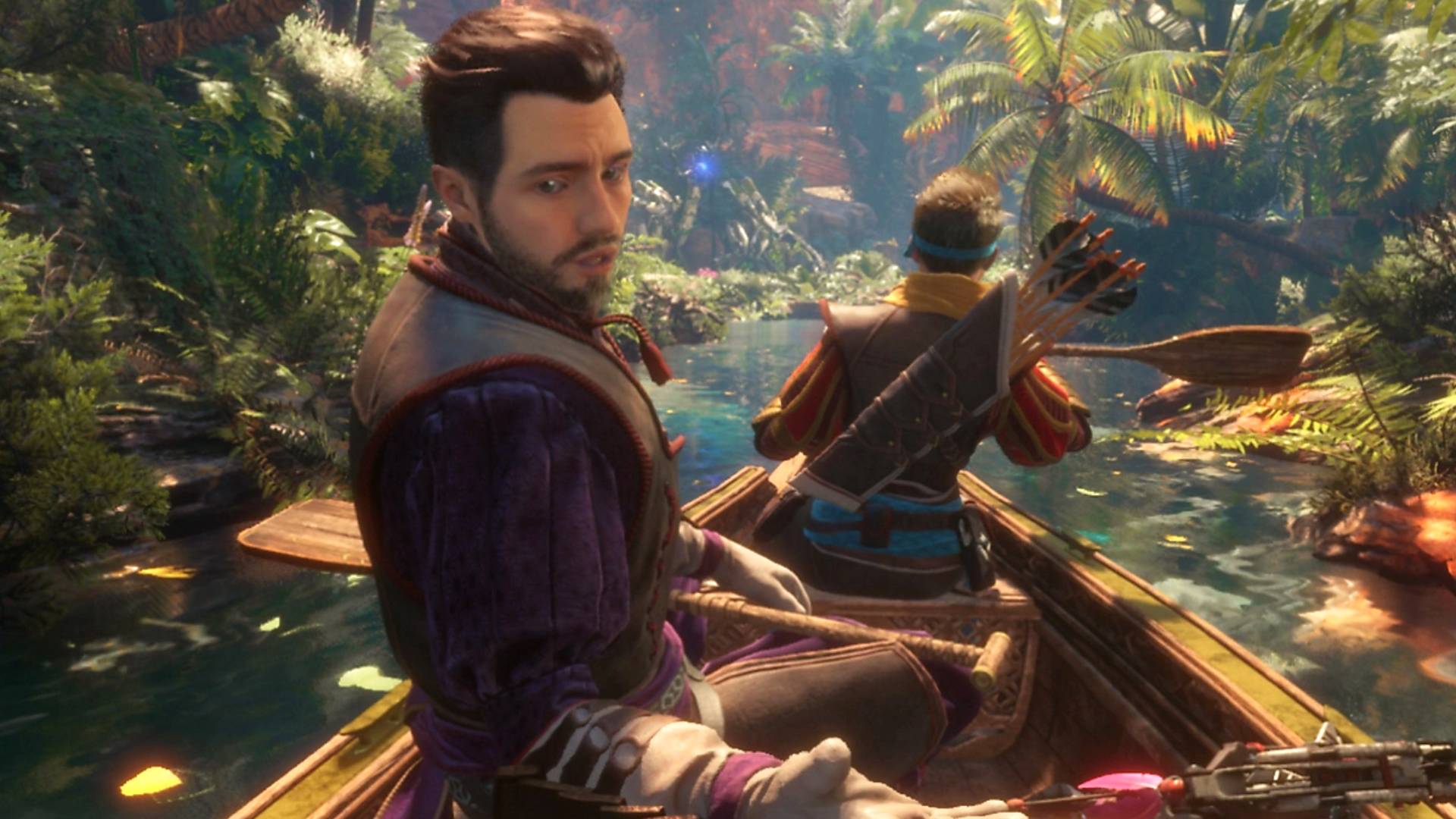It's been a decade, VR games need to stop feeling like slapstick comedies
Face the music

“A toast,” the head of the Peaky Blinders Tommy Shelby says, holding up a glass of whisky. I reach for the bottle in front of me, but my disembodied virtual hand slaps uselessly against the table, knocking the whisky to the floor. I try to style it out by picking up my empty glass to clink it against his, but the tumbler hangs in midair, spinning in place before launching across the room.
“To old friends,” Tommy says.
Clumsiness in early virtual reality games was charming – an opportunity for unintended slapstick. However, now we’re multiple generations into the technology, with headsets costing more than the consoles that run them, we should be beyond it.
We’re multiple generations into VR tech, with headsets costing more than the consoles that run them, we should be beyond clumsiness
In 2012, virtual reality headsets became the next hot ticket item in gaming. Id Software’s John Carmack demoed a taped-together version of the Oculus Rift at a closed-door event, showing journalists a version of Doom 3. “The level of immersion was unlike any other gaming experience I've ever had, and that bodes well for the future if Carmack or someone else can take the tech to the next level,” PC Gamer said at the time.
Now, more than a decade on, the tech has moved to the next level. That old Oculus developer kit’s screen presented 640x800 resolution images to each eye, Sony’s PSVR 2 offers 2000x2040, with twice the refresh rate. The newly released headset tracks your eye movements and has four cameras built into the device that trace your head motion and your controllers.

Too many VR games still have a taped-together quality
Immersion is still the capital that VR games trade in, too. When I tried the PS5 headset for the first time, the eerie humanity I felt when a character in Horizon: Call of the Mountain looked into my eyes grounded me in its strange prehistoric, sci-fi world. I could move around, picking up musical instruments to play with, brushes to paint with, and plates to… smash. I don’t know if there was something more creative to do; smashing all of the crockery was good enough for me...
But Horizon: Call of the Mountain is at the top of the VR ladder, a first-party game built to show off what the hardware can do. Unfortunately, too many games below it still have a taped-together quality.
Sign up for breaking news, reviews, opinion, top tech deals, and more.
Don't look too closely
An early mission in Peaky Blinders: The King’s Ransom saw gang matriarch Aunt Polly and me fending off an attack from communists. The red-sympathizing workers had broken into our betting shop and wired the palace to explode. As Polly kept them busy with her revolver, I moved from cover to cover, ducking low and defusing the communists’ bombs. I knew the betting shop well from years of watching the show, which only made the experience of being up close to the tills and chalkboards all the more exciting.
The moment was ruined when the AI Aunt Polly sprinted into a closed sliding door
However, the moment was ruined when the AI Aunt Polly sprinted into a closed sliding door. It looked like the door would win, with Polly running uselessly on the spot, but after a few seconds, it popped off its runners, letting her move into the room. A second later, the door flew back into place. While we may see a bug like this in a non-VR game, the technology’s immersion ups the impact of glitches, putting you face to face with a game’s stumbles.

VR’s immersive worlds also foster a higher expectation of interactivity. If I can pick up objects like glasses and whisky bottles, then I assume I can pick up any loose item. So, when the communists firebombed The Garrison pub, I ran behind the bar and tried to grab wine to douse the flames. But every one of the bottles turned out to be a static, unmovable object baked into the wall.
I turned to the pumps and tried to pour a pint, thinking maybe I can put the fire out with beer. But that too was an object that did nothing. In desperation, I threw in one of the makeshift bombs I’d been building before the brick and molotov cocktail came through the window. The bomb landed in the fire and sat there like a potato, not even catching fire. Eventually, after searching the storeroom behind the bar, I found a bucket of water to pour over the fire. The whole scene was a frustrating sequence of discovering that more and more of this world is a facade, and, worse, I felt foolish for having been taken in by the illusion of interactivity.
There are moments in Peaky Blinders: The King’s Ransom where the power of VR pays off. Where locations from the series, like the long factory alley that leads up to The Garrison felt awe-inspiring. The proximity to the hell-like soot-blackened walls and belching flames had my heart racing. But all of those gains are undermined by clumsiness and flaws that VR games shouldn’t feature anymore.
It’s been over a decade since John Carmack demoed a taped-together Oculus at E3; when will premium games stop feeling like experiments?

Julian's been writing about video games for more than a decade. In that time, he's always been drawn to the strange intersections between gaming and the real world, like when he interviewed a NASA scientist who had become a Space Pope in EVE Online, or when he traveled to Ukraine to interview game developers involved in the 2014 revolution, or that time he tore his trousers while playing Just Dance with a developer.